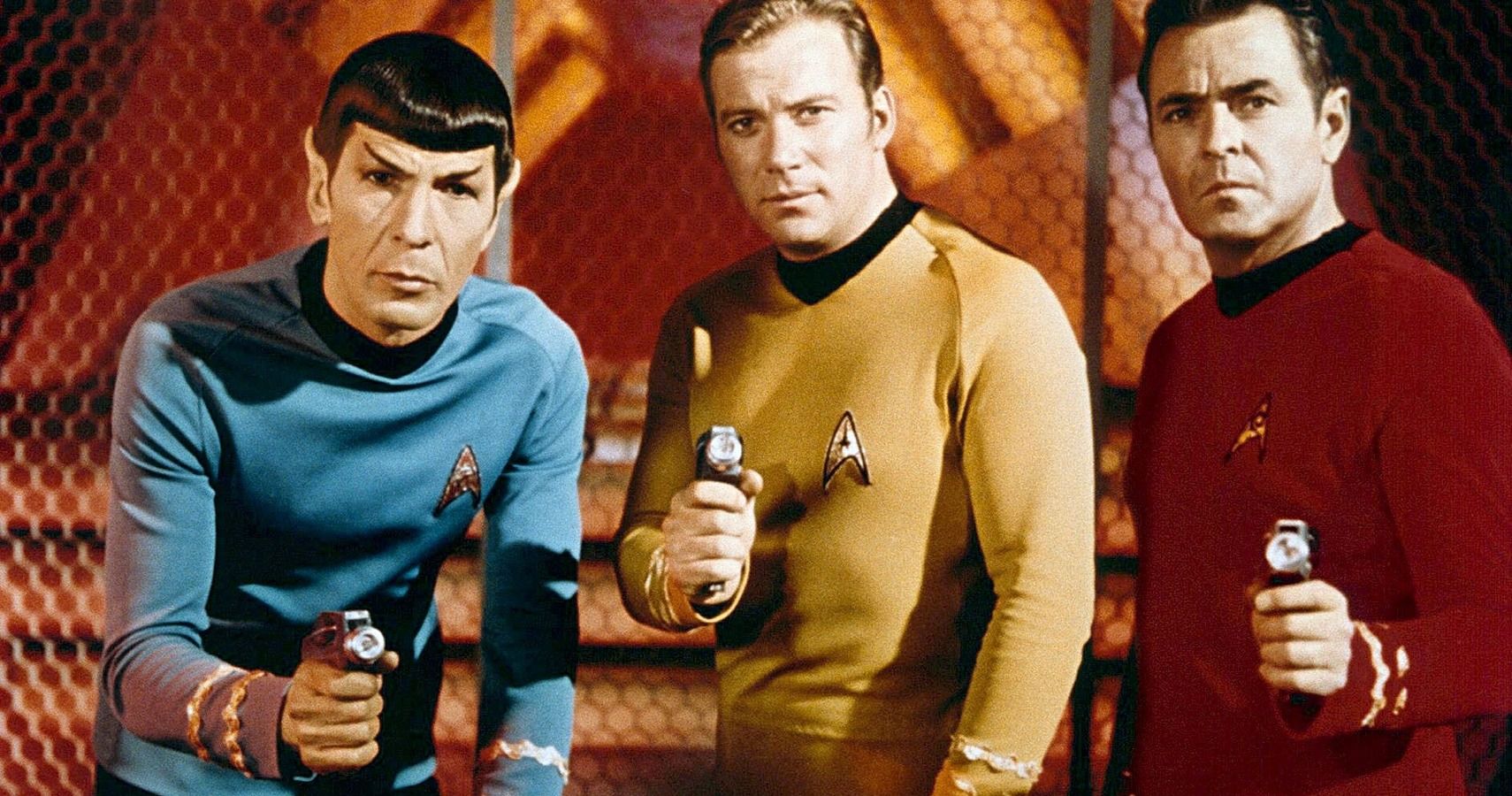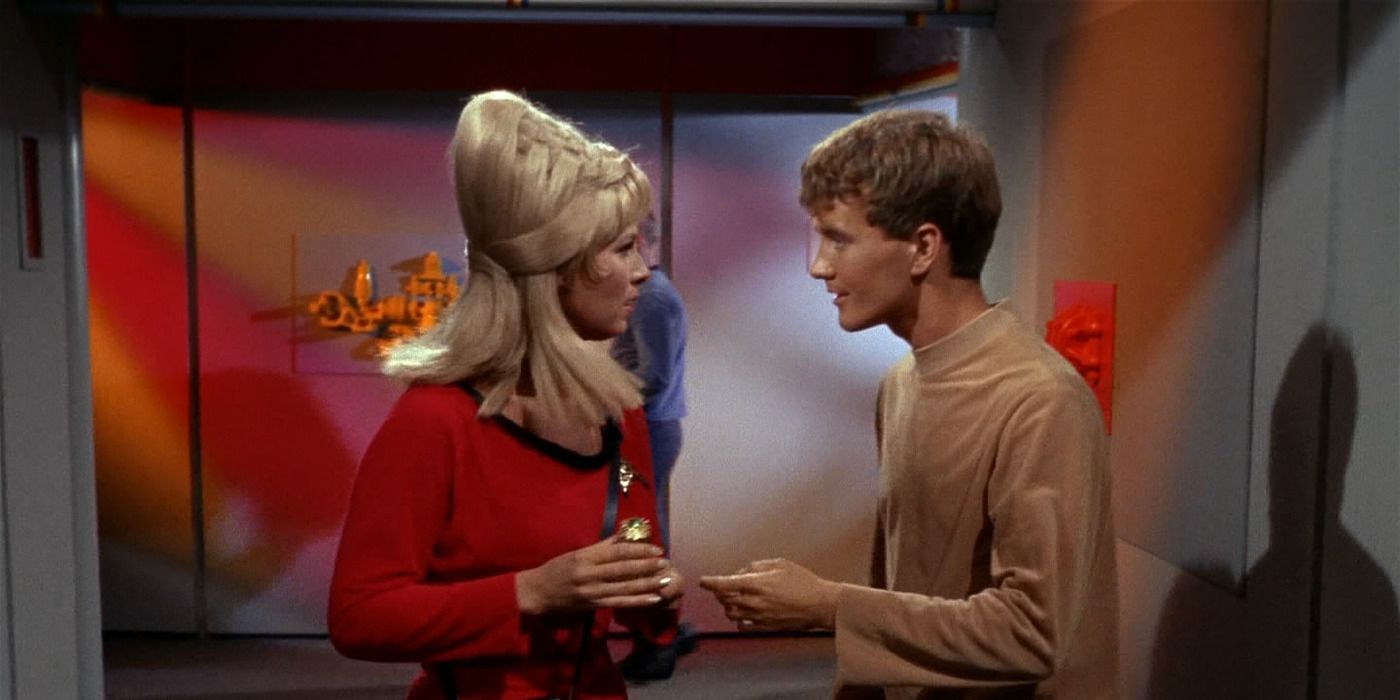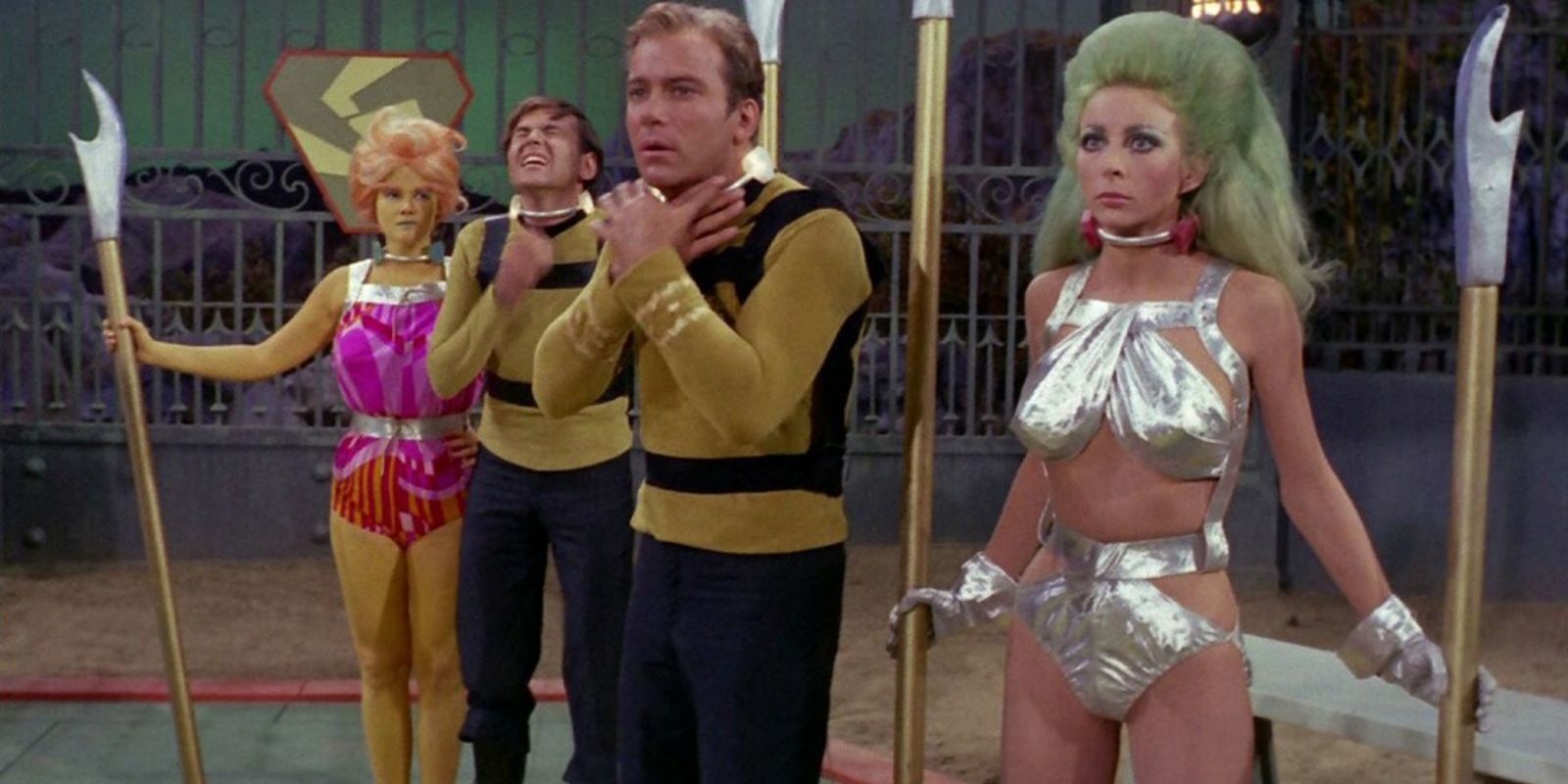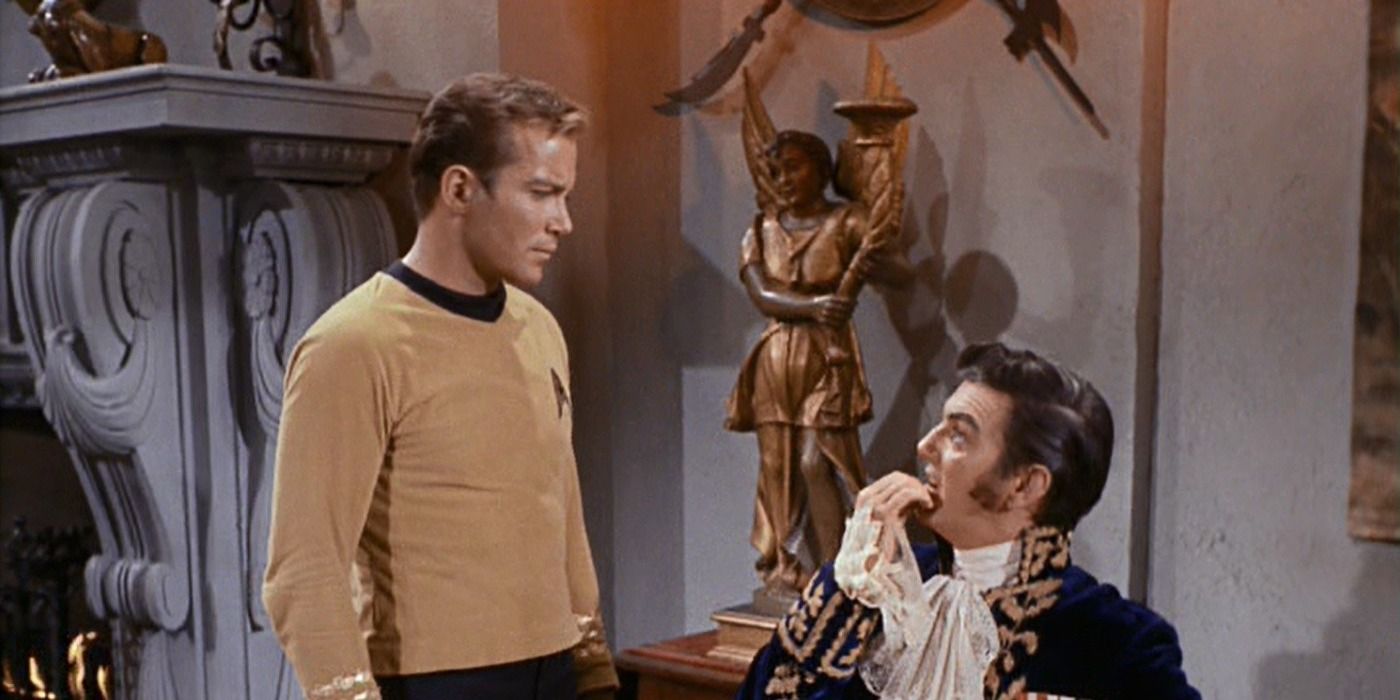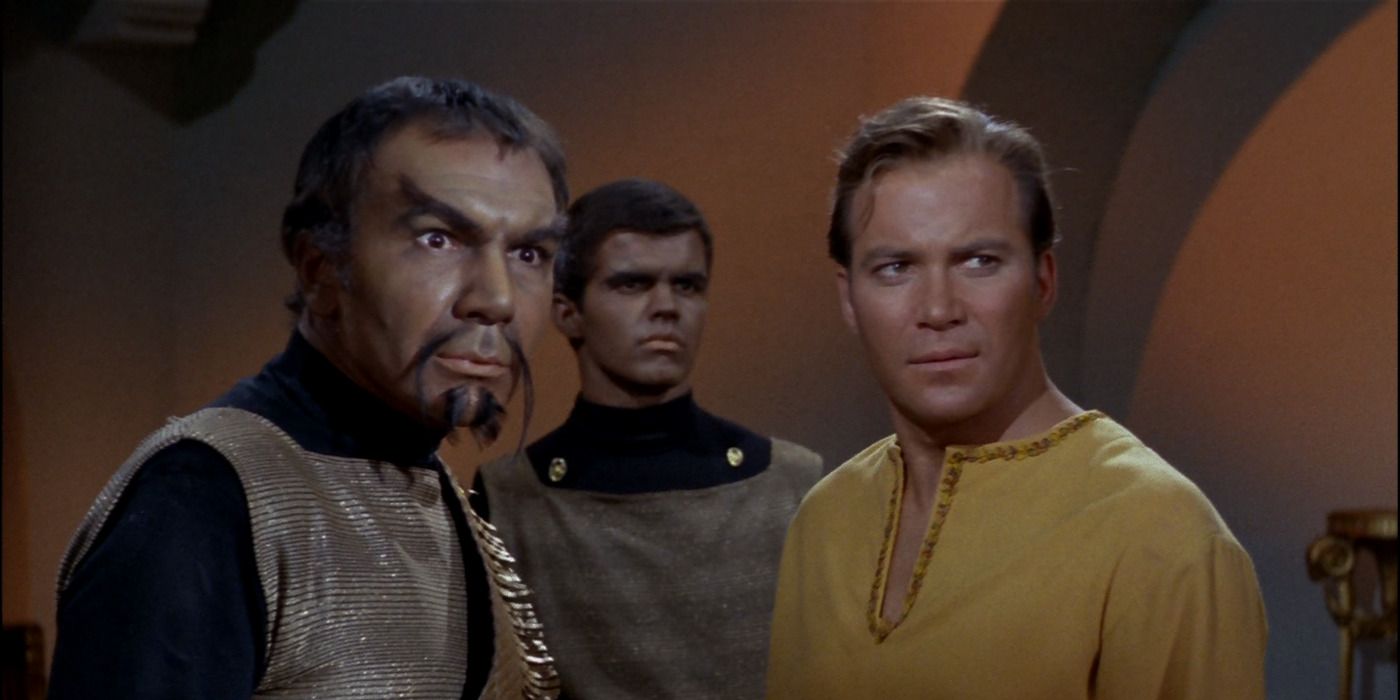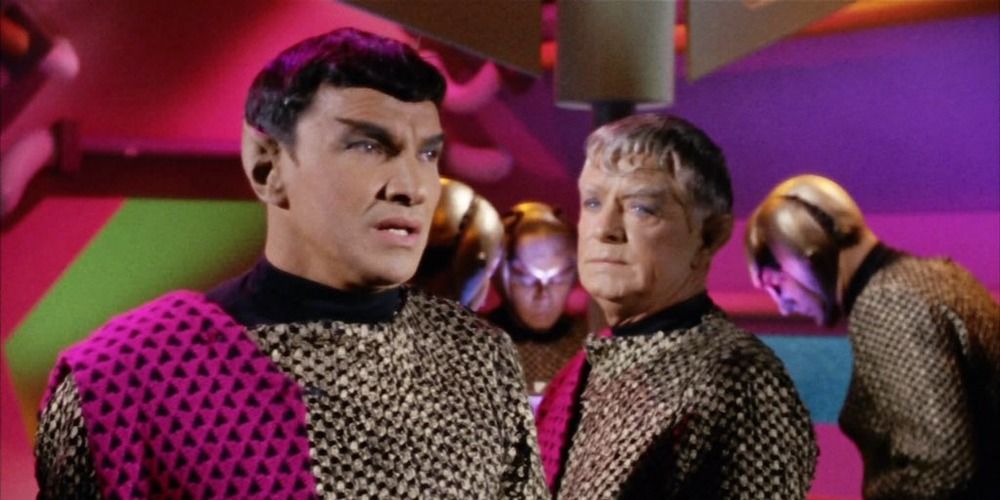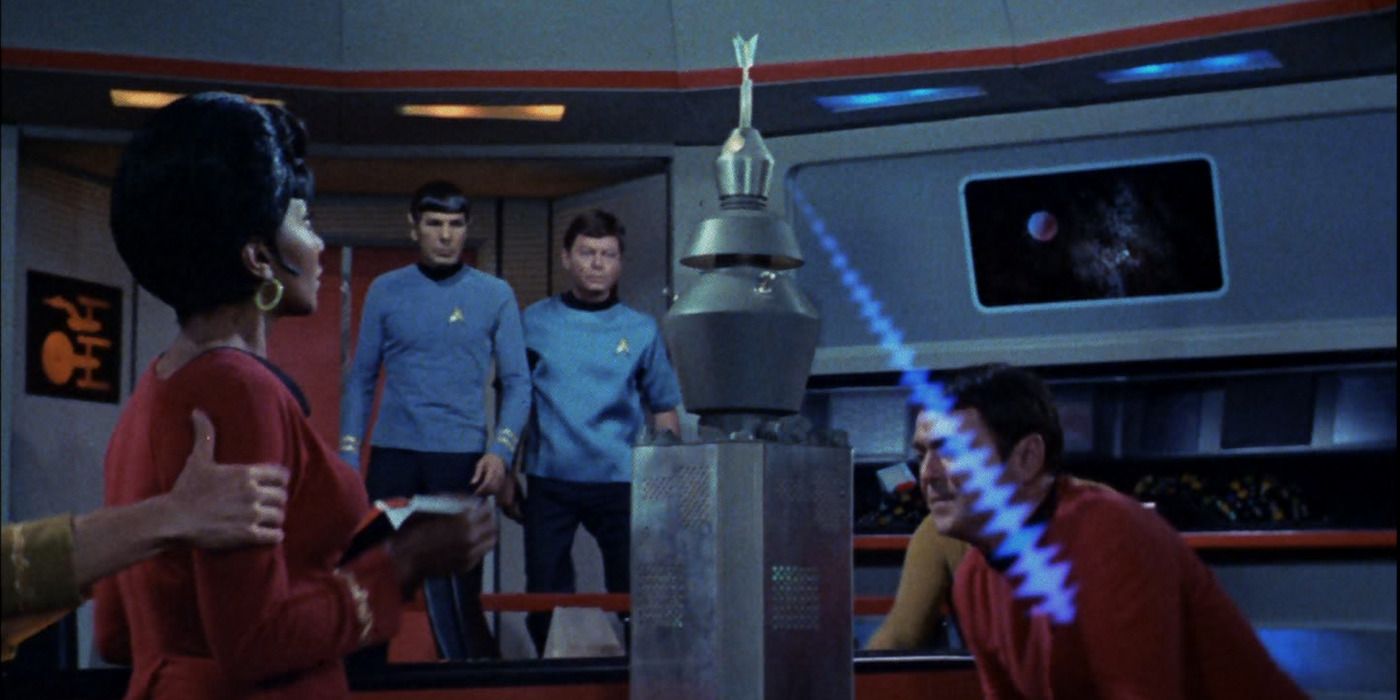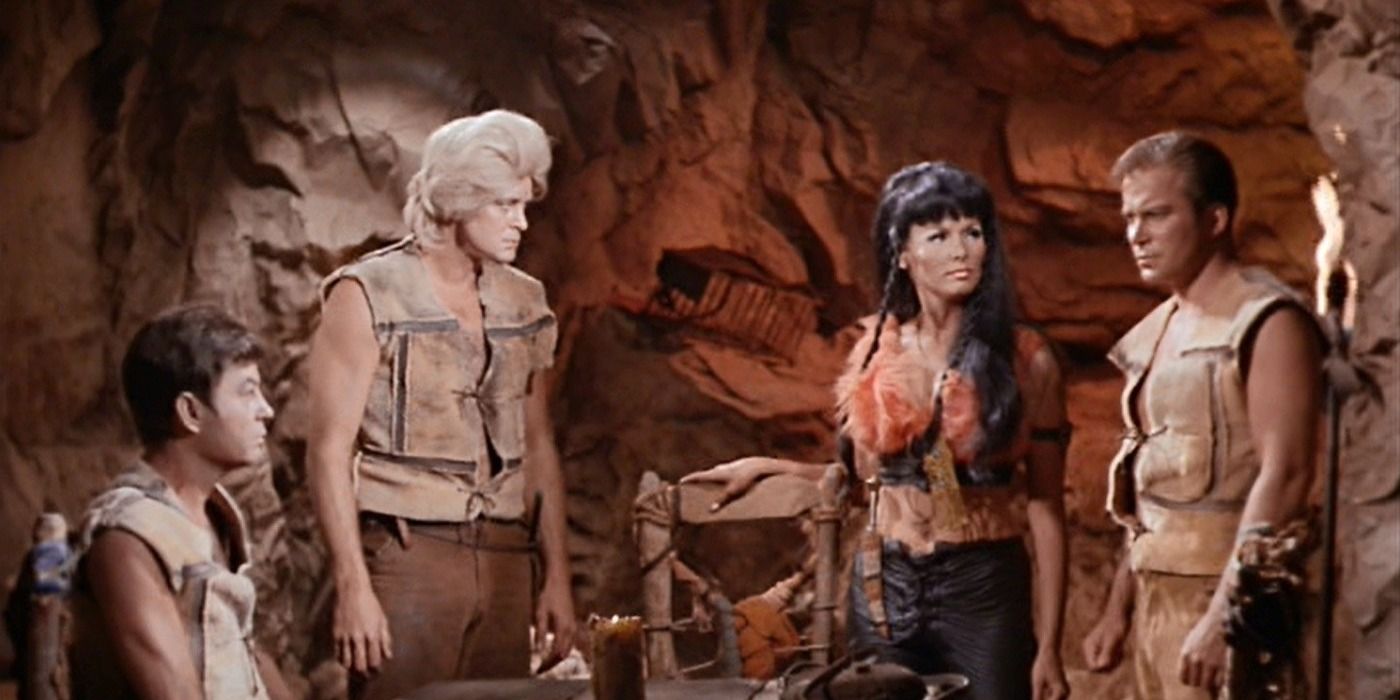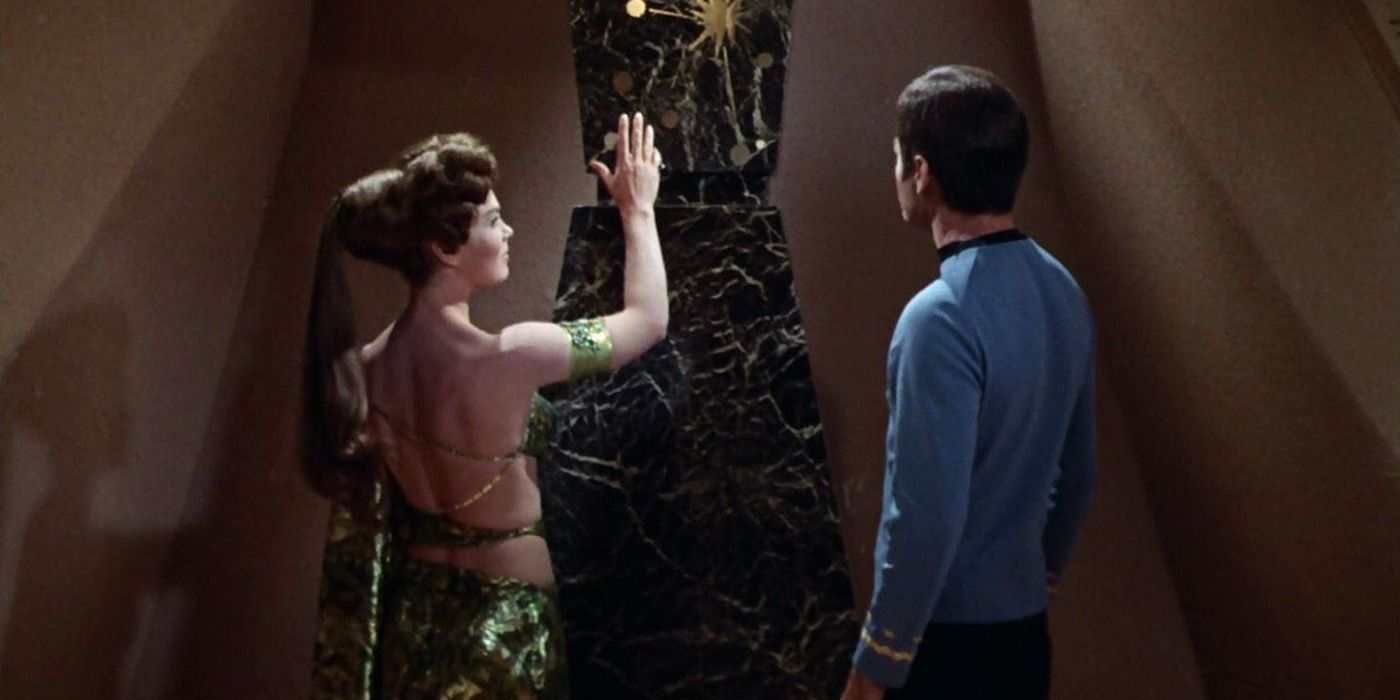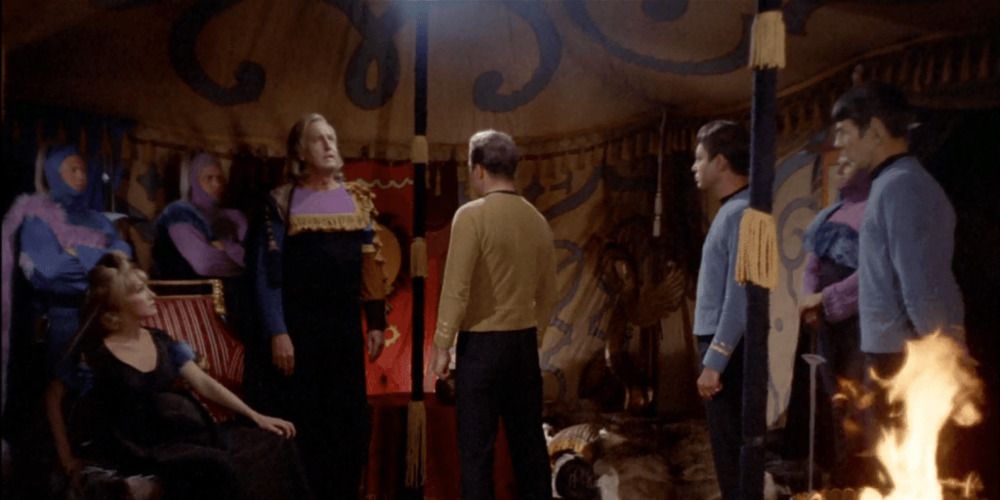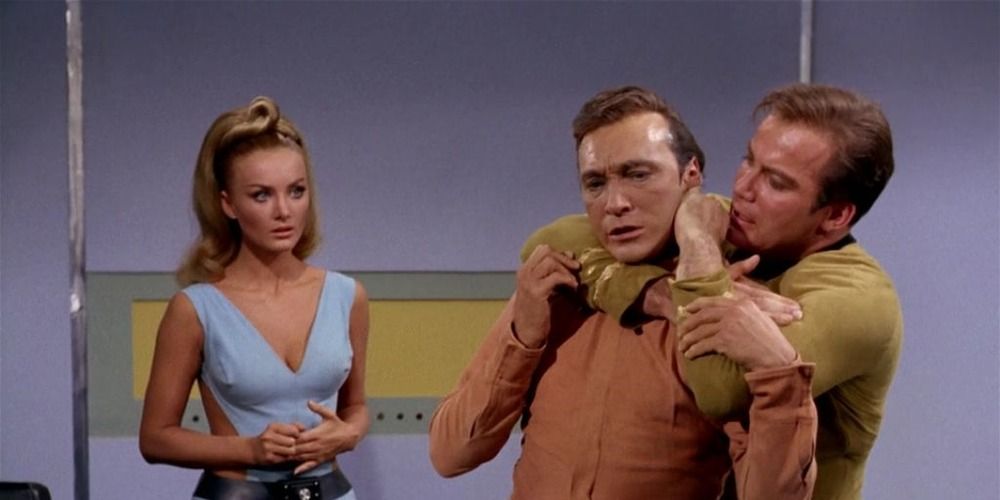If you ask Star Trek fans which series is their favorite, many will tell you "the original" without hesitation. That's not bad, considering the first show aired more than 50 years ago and lasted barely three years and only 79 episodes before getting canceled. Part of the reason Star Trek: The Original Series is still popular is because of good writing. The characters and their adventures have stood the test of time. Sometimes a good storyline doesn't have to finish, and plenty of these episodes are still some of the best even though they often included or ended in storylines that were never resolved.
One glowing exception to this annoying trend could be the film Wrath of Khan, an unfinished storyline from an old Star Trek episode that was resolved in one of history's most iconic films. Anyone of the following dropped threads could also be woven into a movie all its own. Here are ten storylines from Star Trek: The Original Series that were never resolved.
Kidnapped!
In an episode that might have come from The Twilight Zone or Amazing Stories, "Charlie X" was one of the earliest installments of TOS. It confronts the crew of the Enterprise with the ugly and tragic side of human and alien contact. It was first believed that Charlie had grown up alone, but it turns out there was life on Thasus after all, and his adoptive parents take him back into captivity.
This explains Charlie's survival and his godlike powers, but other than a few passing references to Tharsus we never find out more about the Thasian race, nor do we find out what ultimately happened to Charlie. Considering how dangerous he was and his strong will to escape, how come we never heard from him again?
The Providers and The Freed Slaves
"The Gamesters of Triskelion" is one of the more famous TOS episodes, mostly noted for its crazy costumes. so it's a disappointment that we never returned to this planet to see how everything turned out. The Gamesters agreed to change their ways, but after hundreds of years how easy would it have been? It would have been a compelling story to find out how the Gamesters functioned without slavery and betting, or if they regressed to their old habits. Perhaps the tables were turned and the Gamesters became slaves.
It was an interesting story, told in that classic original series way, complete with sci-fi tropes, budget props and costumes, and a storyline that was never resolved.
Who is General Trelane?
It's possible that the character of Q evolved from the same idea that gave us mysterious characters like the Squire of Gothos, who also calls himself General Trelane. He looks and behaves like an obnoxious human being but he has mysterious powers, and he displays and cavorts with Kirk and his crew as if they were toys. The twist is that even though he looks like an adult, he's actually a child, and his desires are a mix of kinetic powers and machinery.
Eventually, his alien parents intervene and tell him to "come inside now" but they never identify themselves or where they're from. We only know that they dwell in the "star desert," a void of few galaxies, and despite their advanced technology they never appear again.
The Truce that Stopped a Klingon-Federation War
Wouldn't a truce, stalemate or permanent ceasefire in any interstellar conflict be inevitable after running awry of a bunch of superior beings with the power to stop all time and space? In "Errand of Mercy" that's exactly what happens between Captain Kirk, the representative of the United Federation of Planets, and Kor, the Commander of the Klingon Fleet. The people of the ironically named Organia were beings of pure energy who kept to themselves, but the disturbance that the Klingon-Federation conflict brought to their planet drove them to intervene.
Their leader, Ayerborne, not only made their conflict impossible but rightly predicted that Kilgons would eventually join with the Federation. The Organians appear in an episode of Star Trek: Enterprise, but this pre-dates TOS. We never see them again after they save the whole universe from the Klingons and the Federation.
The Aftermath of Terror
It might be a clever plot twist or maybe just a way to stretch the limited makeup budget. Either way, it's a bit of a shock when the Federation gets their first look at Romulans in the episode "Balance of Terror" and finds out they look a lot like Vulcans. To be fair, the Romulan Commander is played by Mark Lenard who also played Spock's father Sarek in several episodes, so they literally do look like Vulcans.
Spock, our usual theme character, gives us some backstory about the creation of the Neutral Zone and previous conflicts with Romulans, so does it seem odd that nothing ever really came of this? We could explain it away by saying that wouldn't fit into the show's stand-alone episode style, but this could have been the start of something really big, like a galaxy-wide war. The Kelvin Universe that was the setting for 2009's Star Trek movie came close to picking this up by bringing in a Romulan villain but it's disappointing that nothing further came of an incident that could have easily made its own movie.
Who Changed "The Changeling?"
"The unanswered question is, the other what?" Spock, The Changeling, Season 2 Episode 3
The Creator gets a lot of attention because if he doesn't he walks off the set, but why is there no trace of the alien race that built "the Other"? Nomad gained its power and destructive orders when it merged with an alien probe, but who were the aliens? During a mind-meld, Spock mentions the Tan Ru, but this is the name of the device, not the inventors, their location, nor their home planet. Nomad was originally created by a human scientist but, as Spock states, we never find out the ultimate source of Nomad's acquired power.
Perhaps the race that built Tan Ru was extinct or had an aggressive nature, even though "the Other" itself was designed for a benign purpose. If you were a modern viewer, you might think Nomad sounds a lot like the Borg, so maybe this isn't a dropped thread after all.
The War and Tyee's Tribe
If anyone ever wondered why the Prime Directive was a good idea, this episode is a perfect example of why it's important. In "A Private Little War" we follow Kirk to a surface of a planet inhabited by primitive life.
The Klingons intervene first, providing advanced weapons to one tribe, and Kirk has to decide how to help his friend Tyee and his tribe without doing the same. The story follows a few classic Game of Thrones tropes, complete with jealousy, lust and a vicious struggle for power that eventually engulfs Tyee's tribe. Or at least that's the way it seems at first, with Kirk's grim resignation that his best efforts have failed. It would have been nice if the Enterprise had ever stopped by again to find out.
The Final Destination of the Yonada
This episode has some great lessons and themes about stepping into the unknown, but it leaves a few unknowns itself. In "For the World Is Hollow and I Have Touched the Sky" McCoy is stricken with a fatal illness. They run into a ship with a similar problem. The people of Yonada think they live on a planet, but they're actually on a spaceship that's off-course. the episode, McCoy is cured and the ship is returned to its original course to a safe planet.
At the end of the episode, Kirk even tells McCoy they'll come back in 390 days, when the ship is due to arrive, and check up on everyone. We're still waiting. What is that, Voyager years?
Eleen's Baby
The trope of a warrior society with a firm patriarchal structure appears in the Star Trek franchise a number of times, and the Capellans are one example. If you're familiar with the Kazon race of Star Trek: Voyager then you already have some idea of how the hierarchy works. After some palace intrigue and some quaint violations of the Prime Directive, McCoy and Kirk become the caretakers of a political refugee of sorts, who happens to be carrying a child with important royal lineage. She gets attached to both McCoy and Kirk and even names her child after both of them, Leonard James Akaar.
According to the laws of her people, her child is the new Teer, or leader, and she is his regent. Therefore both are protected as part of the family unit in the tribal hierarchy. A bit of intervention on the part of the Federation didn't hurt, either. We need those mineral rights, after all. It would have been interesting to see what kind of Teer Leonard James Akaar turned out to be.
The Kelvan Society
One of the episodes in which brawn wins the day instead of brains, "By Any Other Name" shows how even the most advanced societies can succumb to catfights, petty squabbles, love triangles, and alcohol. Kirk and Scotty lead the charge when it's time to out-drama the unfeeling Kelvans, who are unaccustomed to inhabiting flesh-and-blood bodies.
Considering how powerful the Kelvan Empire was throughout the Andromeda Galaxy, how come we only heard about them in one episode of TOS? Despite their status as one of the greatest imperial powers in their own quadrant of space, they were no match for Scotty and his flask. So what were their other weaknesses? Any stories of conquest? And what other races did they try and subdue? That's why it's frustrating we didn't hear more about them.

